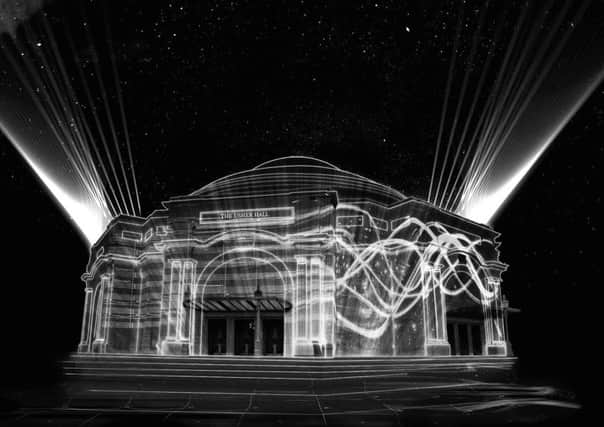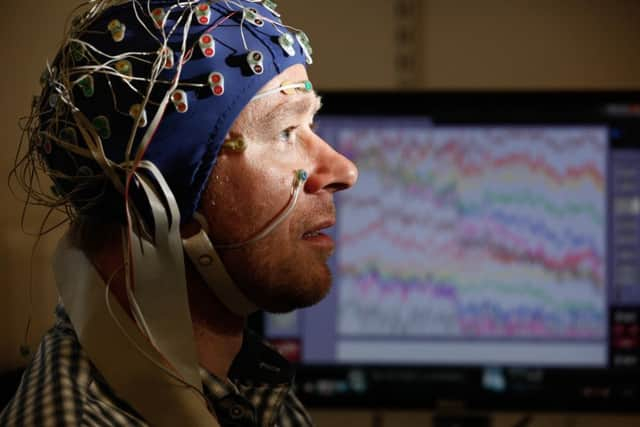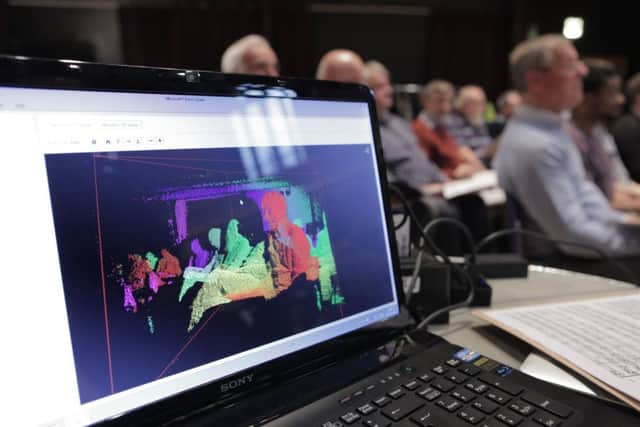Singers wired in for Edinburgh festival opener


One by one, volunteers are undergoing tests on their brains, eyes, faces, vocal chords, and even the sound waves they emit when they break into song.
Scotland on Sunday is witnessing the initial stages of what is billed as one of Britain’s most ambitious arts events of the year.
Advertisement
Hide AdBut the results captured by the team of researchers at Edinburgh University’s world-leading School of Informatics will eventually be used for a spectacular opening for the world’s biggest arts festival.


Data from the behavioural patterns of singers who perform in the Edinburgh International Festival each year will be transformed over the next few months into spectacular digital animations, which will be beamed on to the front of the Usher Hall for the event’s opening night this year.
The movement of their eyes, their pulse rates, their reading of a score and the way their faces change is being analysed using cutting-edge technology for the project, which will close the traffic outside the venue for two hours and is expected to bring up to 10,000 festival-goers on to the streets.
Some chorus members have even volunteered to be equipped with GPS tracking systems to monitor their travels in the run-up to the performance of The Harmonium Project, which will run for just over half an hour on 7 August, and will be the festival’s first outdoor curtain-raiser.
The different patterns being created from around 15 singers will then inspire the creation of images which will be projected from equipment installed in bedrooms at the Sheraton Hotel onto the historic facade of the concert hall.


Columns of light which will be shot into the sky during the free outdoor event – which is being staged to celebrate 50 years of the chorus – are expected to be visible for miles outside the city centre.
Advertisement
Hide Ad59 Productions, a production company which worked on the opening ceremony of the London Olympics, used similar animation technology to transform Sydney Opera House and Hampton Court Palace in London in the last year. The company’s creative director, Richard Slaney, said: “The whole process that is happening at the moment is called cognitive data capture, but using totally different methods.
“The idea is that we build up various pictures of what it is to be a singer and use different bits of the techniques that have been used to then visualise something which can be shown on the outside of the Usher Hall. Part of all this is that we didn’t want to show the chorus literally on the outside of the venue – it would have been too obvious to film them inside and project their performance on to the outside.”
Advertisement
Hide AdHe added: “We are going to record them in advance so that we can make sure the timing of the concert has the same pace as all the animations we’re going to make. We’ll need a bit of time to match things together.”
The project is not only a first for the EIF in its 69-year history, but is also expected to help with the world-leading research using digital facial mapping at the university.
Robin Hill, a cognitive scientist at the informatics school, said: “This is definitely something very different and quite experimental for us. We’ve not carried out any tests on singers before.
“What we will be producing for Richard is sections of the data synchronised with the music. His job is to turn them into something more digestible and accessible to people, so they’re not just staring at a bunch of graphs.”
Naomi Barkley, a former high school music teacher who is now a project support officer with the NHS, was one of the chorus members who put themselves forward for the tests, and said some members wore pulse monitors, while filming changed the atmosphere of rehearsals.
“People are genuinely quite excited about it. Things like this don’t normally happen with choirs, so it’s just a bit different and intriguing for everyone,” said Naomi.
• The Harmonium Project will be staged outside the Usher Hall at 10.30pm on 7 August